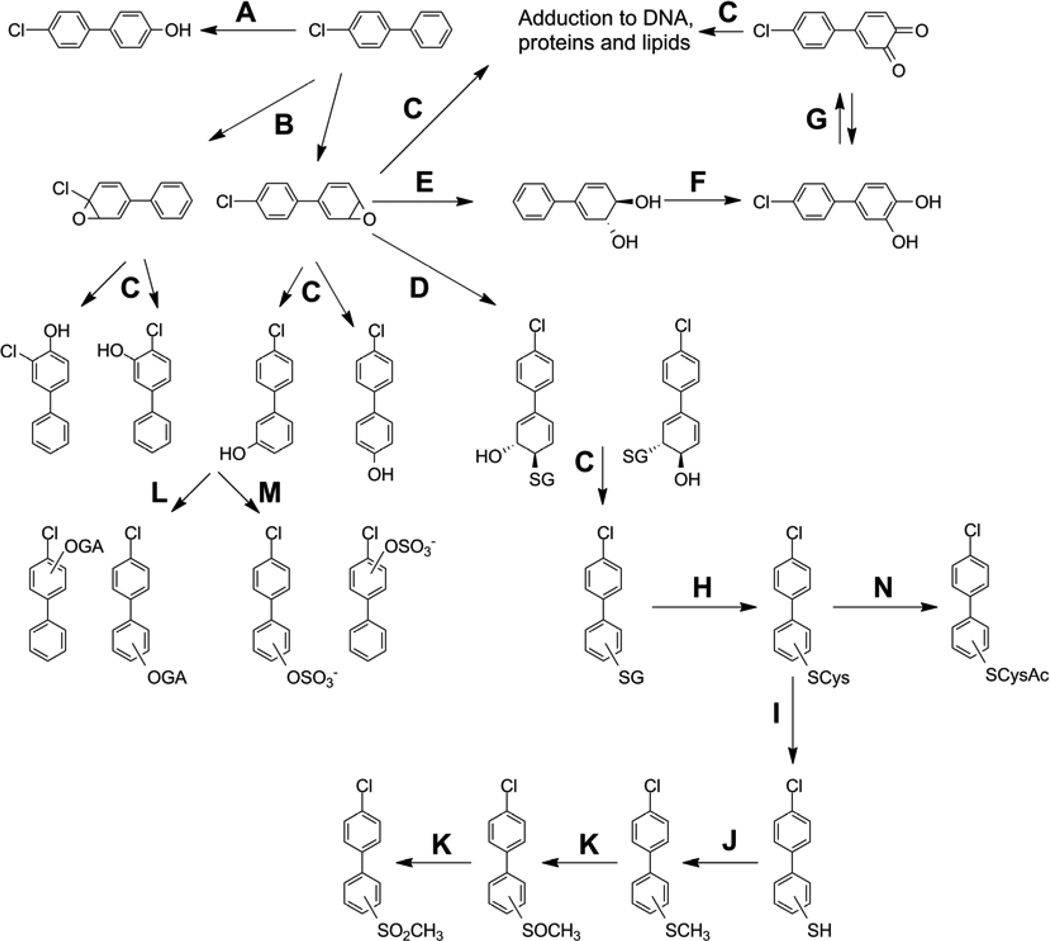Figure 1.
General metabolic scheme for a representative lower-chlorinated PCB congener, PCB 3. Enzymes involved in the metabolism are indicated by the letters A, B and D-N with the letter C indicating non-enzymatic transformations. Enzymes suggested for these transformations are listed as follows: A, Cytochrome P-450 (CYP) enzyme system, Direct insertion in meta position; CYP2B (rodents); B, Cytochrome P-450 enzyme system; CYB2B1 (rodents); CYP3A4 (humans); Non-coplanar PCBs: CYB2B, 2C, 3A ; C, Non-enzymatic reaction; D, Glutathione S-transferase; E, Epoxide hydrolase; F, Dihydrodiol dehydrogenase (AKR1C); G, Autooxidation and/or Peroxidases; H, γ–Glutamyl transpeptidase, then cysteinylglycine dipeptidase; I, Cysteine S-conjugate β-lyase; J, Thiol S-methyltransferase; K, CYP and/or FAD-containing monooxygenases (FMO); L, UDP-glucuronosyl transferase (UGT); M, Sulfotransferase (SULT); N, Cysteine S-conjugate N-acetyltransferase

